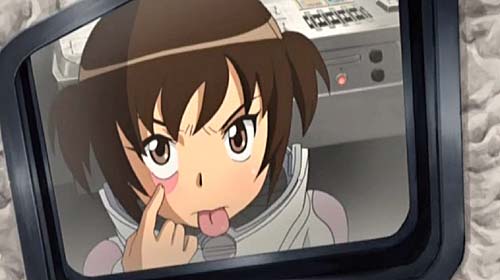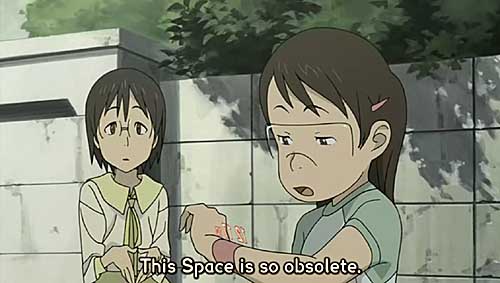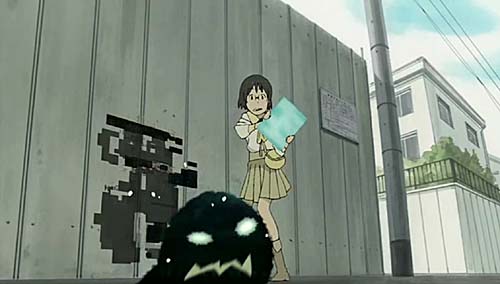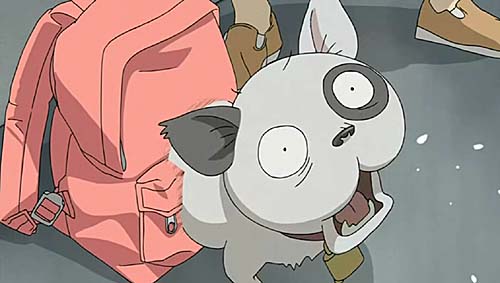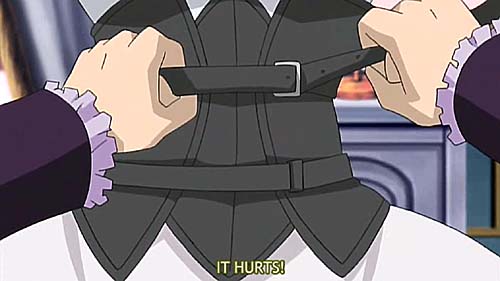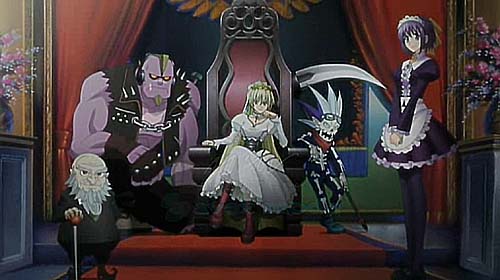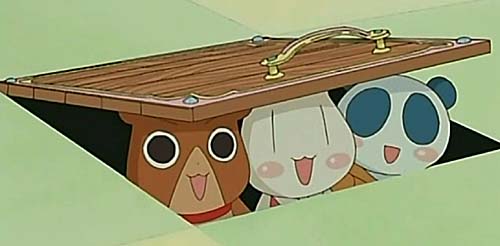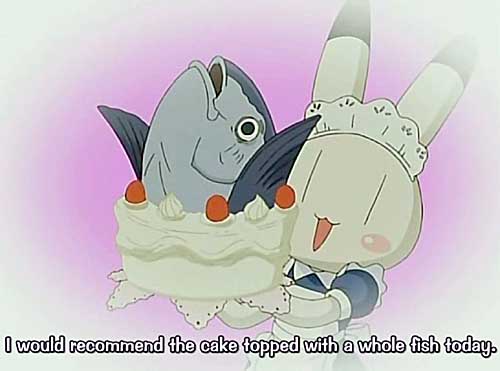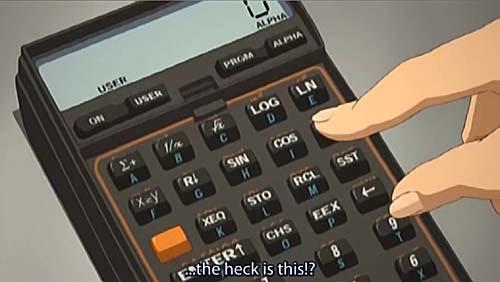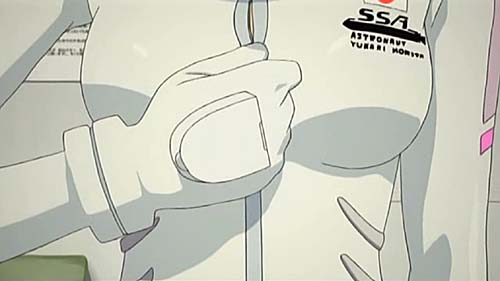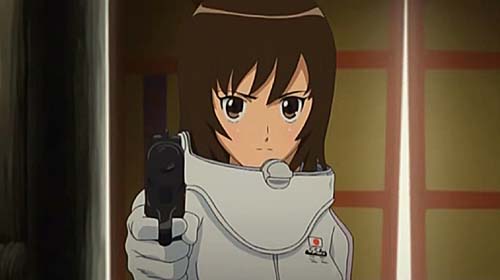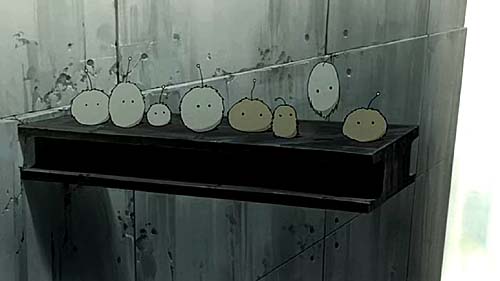
The second episode of Denno Coil introduces the adult members of Yuko/Yasako’s ((Yuko asks her friends to call her “Yasako.”)) family and adds another layer of complexity to the story. We meet her parents, but it’s Mega-baa, her grandmother, who dominates the episode. The crafty old woman runs the combination sweets store and cybershop where Fumie buys her kuro bug spray and other toys. Mega-baa can cure Yasako’s cyberpet of its virus, but there’s a price.
The connections between the real and virtual worlds become increasingly complicated. “Satchii,” a powerful but stupid antivirus program, cannot enter homes, schools or Shinto shrines. By slapping the appropriate “metatag” on the traffic light post, Fumie can change them to red — useful when Satchii is chasing the girls. By slapping a different metatag on Yasako’s forehead, Fumie enables her to fire beams from her glasses. (The beams looks like bolts of energy, but they seem seem to act by disrupting data, causing flickering gaps where they strike.)
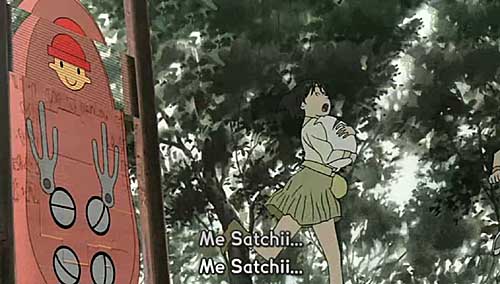
There is evidence that the humans in Daikoku City are themselves at least partly cybernetic. There’s also the puzzle that, although Yasako can pick up and hold Densuke, implying that there is some tactile feedback, she can’t tell if he is as soft and fluffy as he looks.
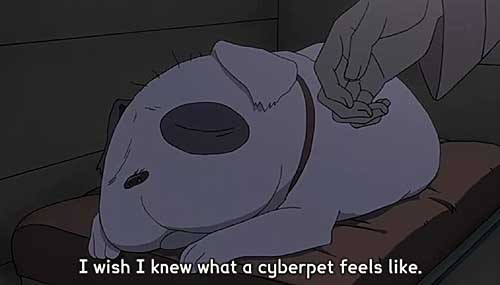
Besides the cybernetic paradoxes, Yasako also discovers that she may have forgotten important details of an earlier visit to Daikoku City when she was quite young. As she investigates the mysteries of the city, Yasako will likely discover much about herself and her family.
It’s too early to be sure, but I think that Denno Coil is probably the outstanding show of the spring. ((The other contenders are Seirei no Moribito, about which I’ll try to write something coherent soon, and Darker Than Black, the first two episodes of which are excellent, though it’s not what I enjoy. Astro discusses the latter here.)) These two episodes are as re-watchable as the first three of Kamichu! Everything is done well. The colors are muted, suggesting water colors, and the character designs are simple but expressive. There’s no cloying KyoAni prettiness here; instead, this highly artificial world seems natural and believeable. Yasako is an attractive character, and Mega-baa is quite formidable and interesting.
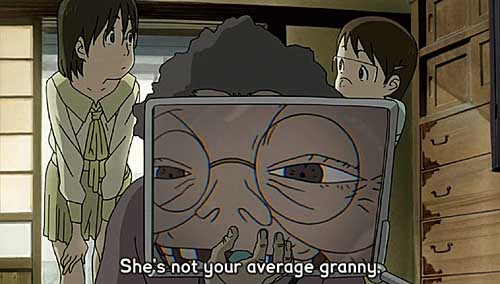
Thus far, Mitsuo Iso and company have been introducing the characters and setting up the rules of their world. What the story will ultimately be is not clear yet. Iso’s theme, according to one writer, is “the distance that separates everyone.” It’s not much in evidence yet, but there are twenty-four episodes to go. If Denno Coil ends as well as it begins, it might be a classic. (Of course, it could degenerate into an illogical mess, but given how sure-footed these two episodes are, I think we can reasonably hope for the best.)
